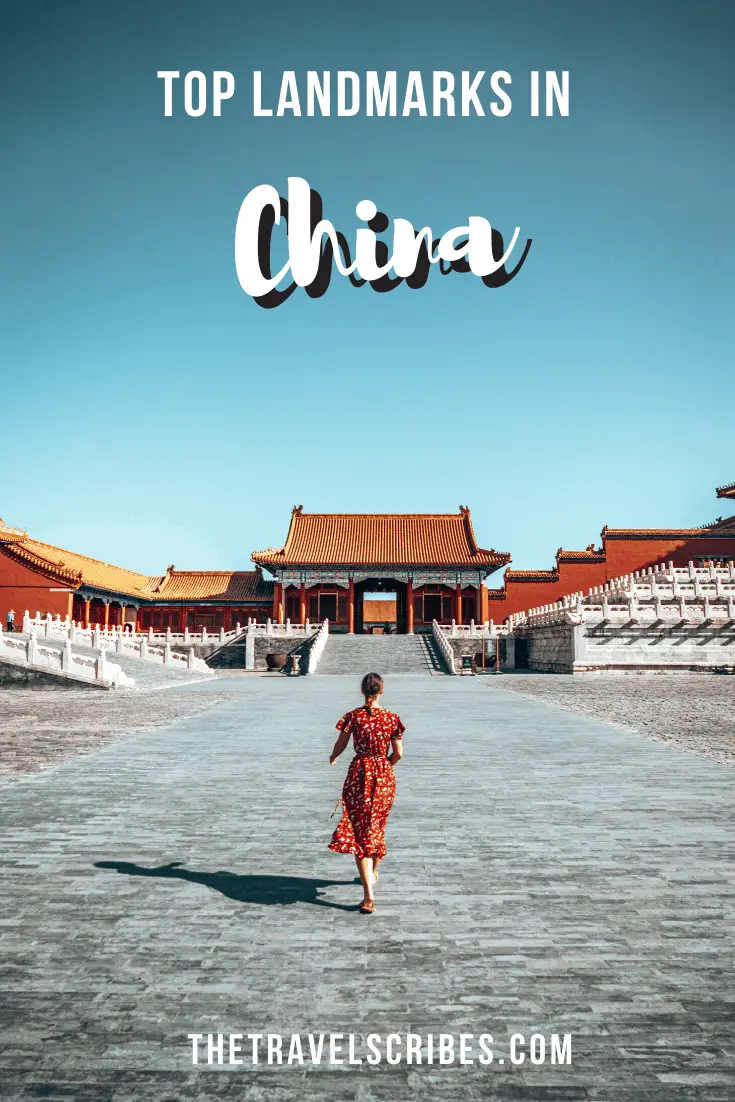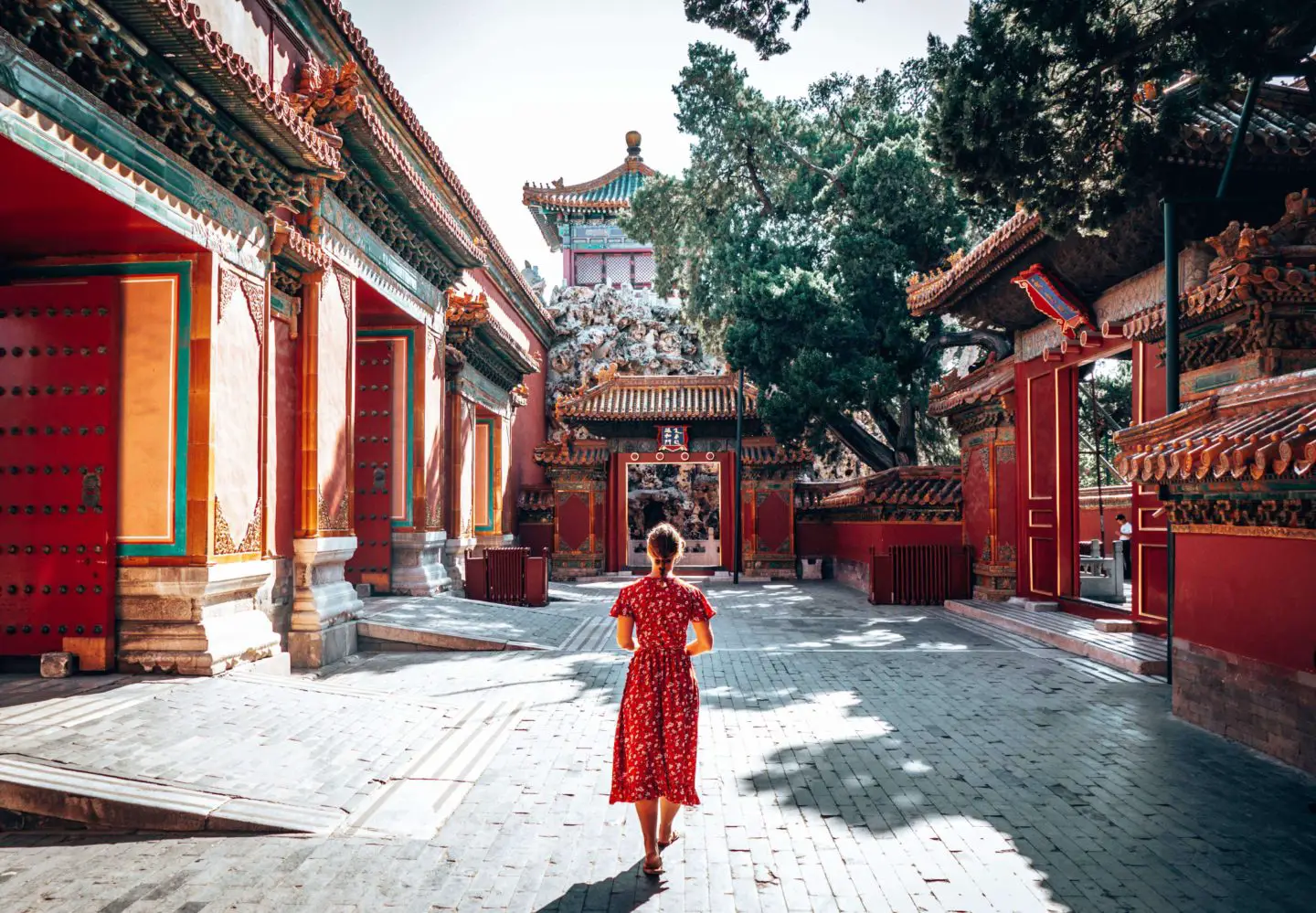China without doubt has some of the most remarkable landmarks, iconic buildings and idyllic landscapes in the world. The country is just littered with phenomenal places to visit and having recently spent a month wandering the most populous country on the planet, we thought it would be a great idea to share with you some of the most famous landmarks in China.
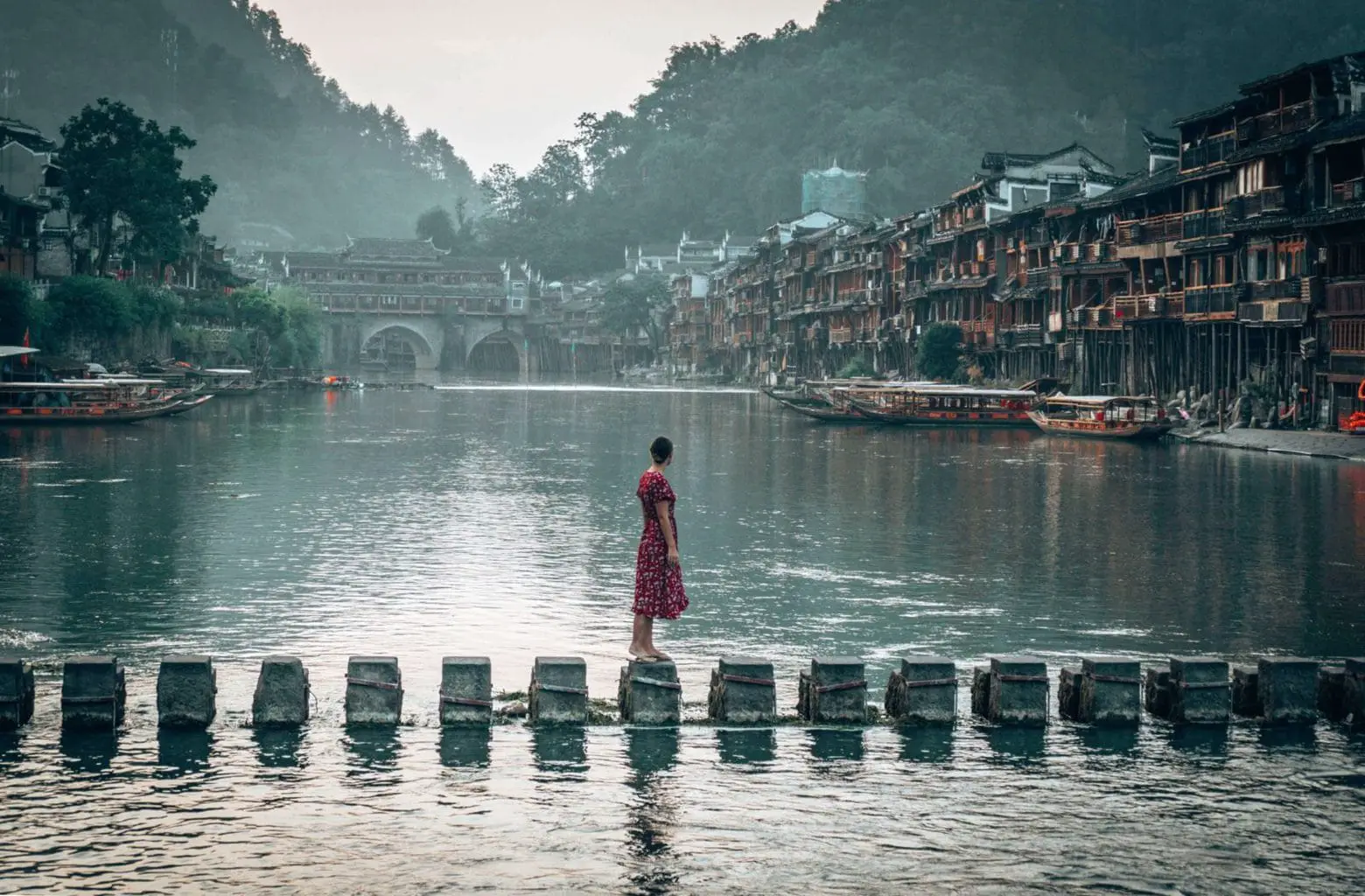
Do get in touch with us if you’ve got any questions about these places, or leave us a comment below if there are any others that you think we should include!
Skip ahead
Our top 10 Landmarks in China
- The Great Wall of China
- The Forbidden City
- Zhangjiajie National Park
- The Terracotta Army
- The Bund, Shanghai
- The Potala Palace
- Tiananmen Square
- The Temple of Heaven
- Fenghuang Ancient Town
- Leshan Great Buddha
The Great Wall of China
Holding onto the top spot in our landmarks of China list has to be The Great Wall of China. Let’s be honest it’s one of the world’s most recognisable landmarks.
This China landmark is just so massive it’s hard to comprehend. The wall just goes on and on, and we were lucky to spend a couple of days exploring different sections of it, including the unrestored Gubeikou, the beautiful Jinshangling and Simitai, next to the water town of Gubei.
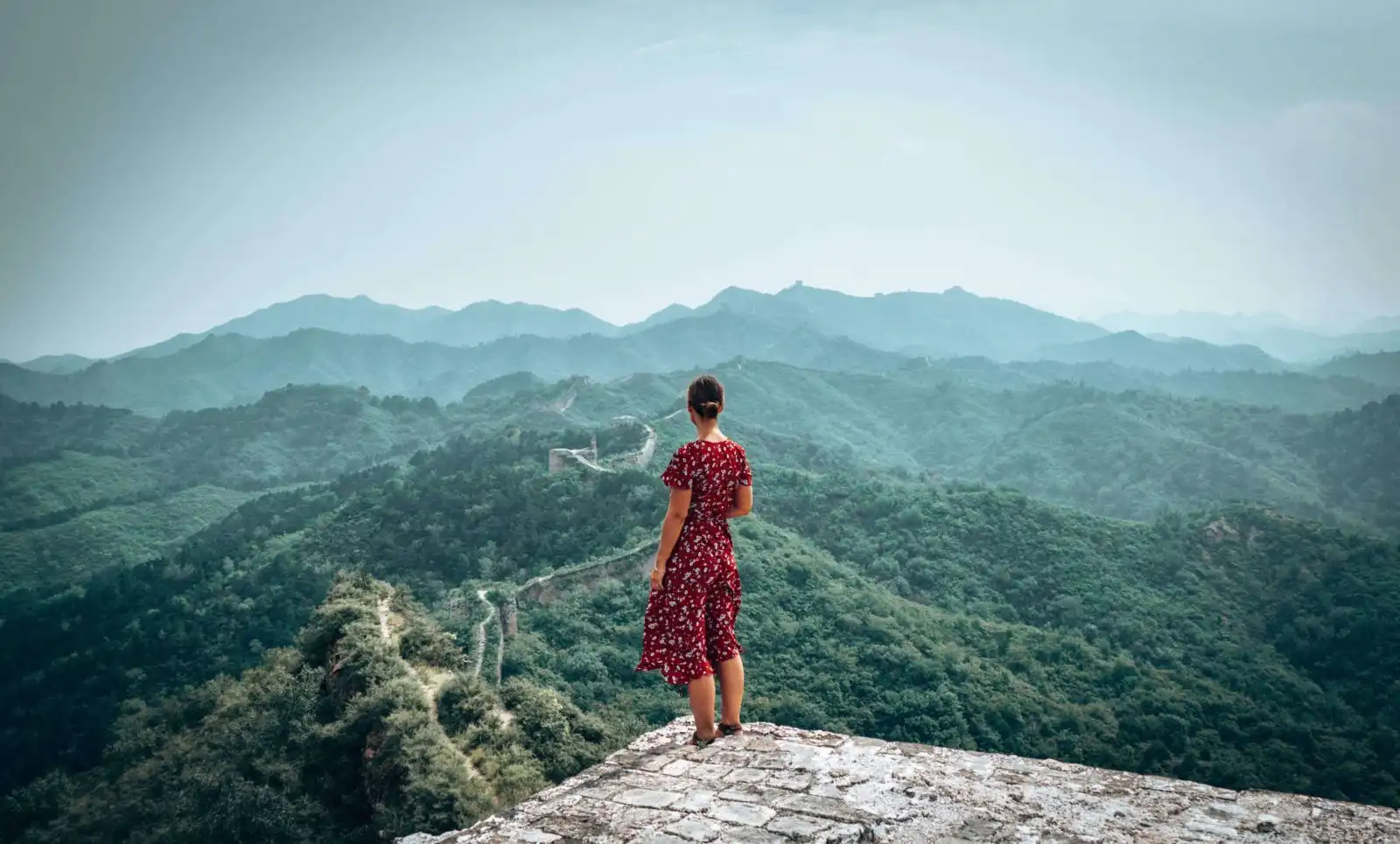
Spending all day long walking the wall was one of the most amazing experiences we’ve ever had. And we only managed to cover about 16km of it… whereas the entire length of the wall is 21,000km. That’s over half the circumference of the earth! And if you wanted to walk it all, at 20km a day, every day, you’d spend almost 3 years walking – and probably get through a fair few pairs of shoes.
What’s even more impressive, is that the wall was started over 2,000 years ago! The mind just boggles when you try and work out how this huge structure was completed all the way back then. And unsurprisingly it’s estimated that over 1,000,000 workers were involved in the project.
Fun fact: It’s actually an urban myth that the Great Wall of China can be seen from space.
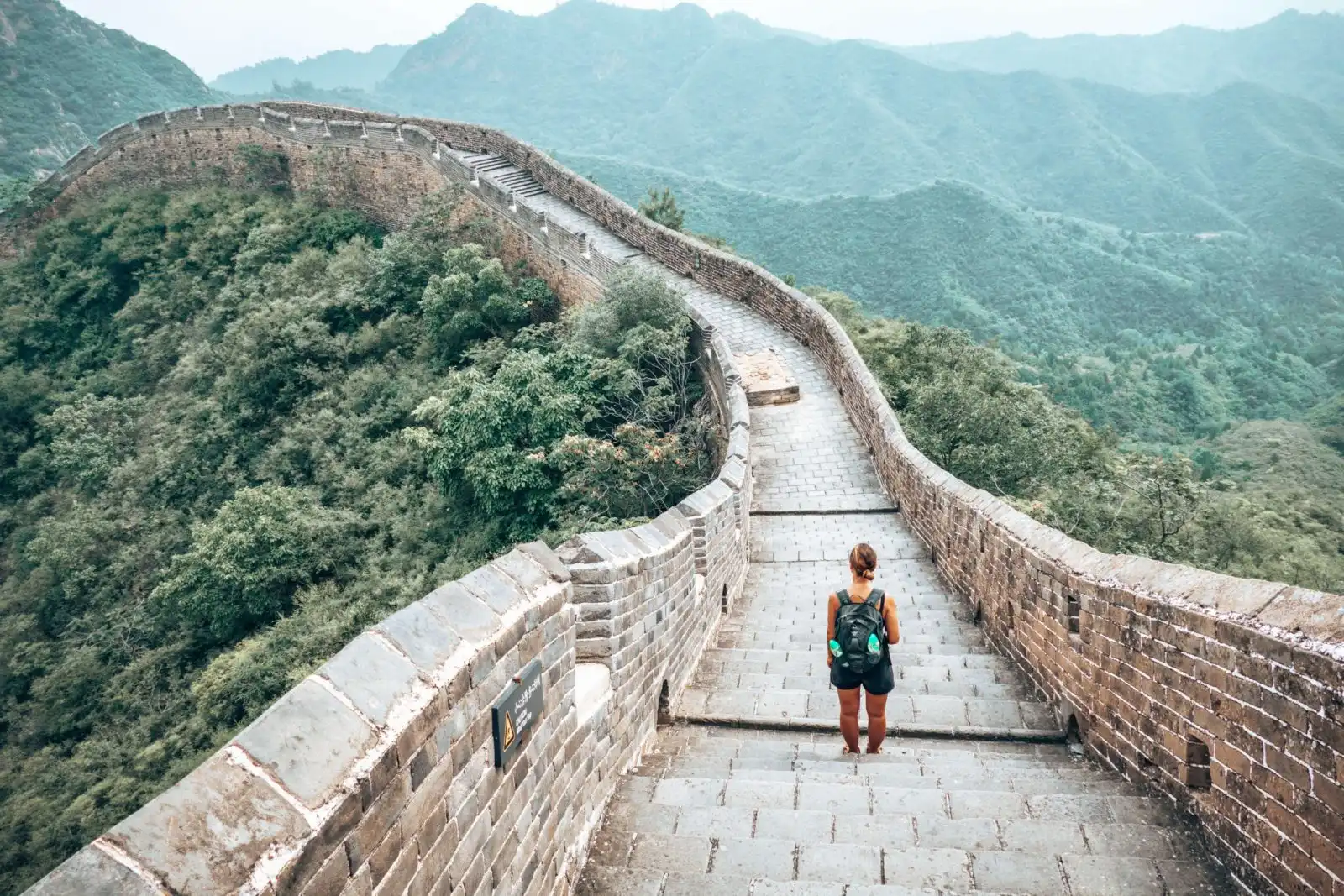
The Forbidden City, Beijing
Another incredible structure; the second place on our top 10 list of landmarks in China goes to the Forbidden City. The Palace complex has been home to 24 different emperors (14 Ming Dynasty and 10 Qing Dynasty) between 1420 and 1912. The first emperor to call this palace ‘home’ was Zhu Di, who ordered it’s construction in 1406, taking over a decade to complete it with the use of 1 million workers.
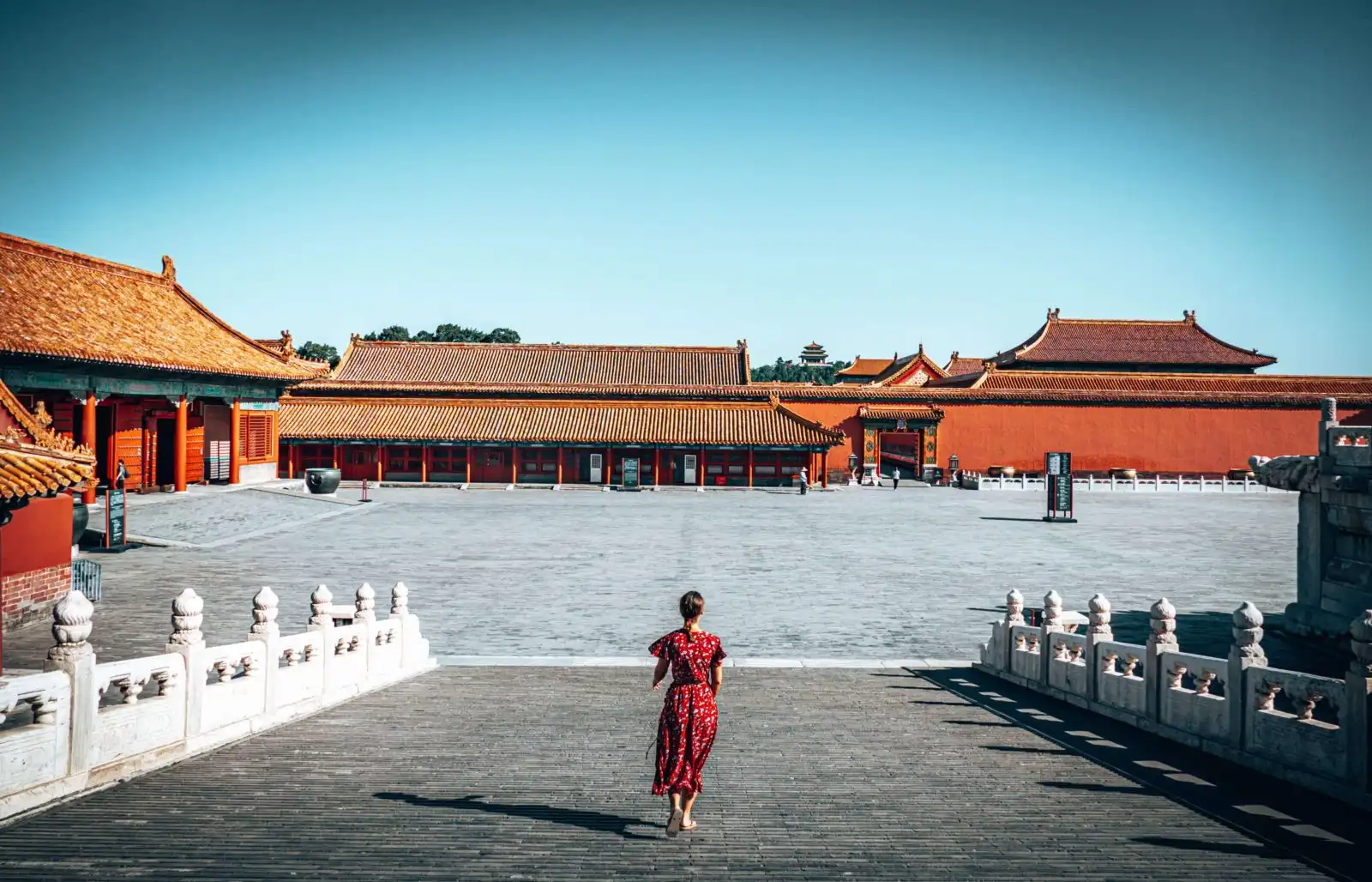
The Forbidden Palace is the most impressive palace complex that we have ever visited, but it can get very busy, with around 14 million people entering the Palace each year, that’s an average of 40,000 people every day. So if you’re planning on visiting make sure that you get to this landmark as early as you can!
Alongside being a huge structure – being almost a square kilometre is size – this UNESCO World Heritage Site holds nearly 1000 buildings and over 8,500 rooms. It also has one of the most important collection of Chinese artifacts in the world, consisting of over 1.8 million pieces of artwork.
Fun fact: The name Forbidden City is a translation from the Chinese name, Zijin Cheng, which directly translates the same – it was called this as no one was allowed to enter or leave without the Emperor’s permission.
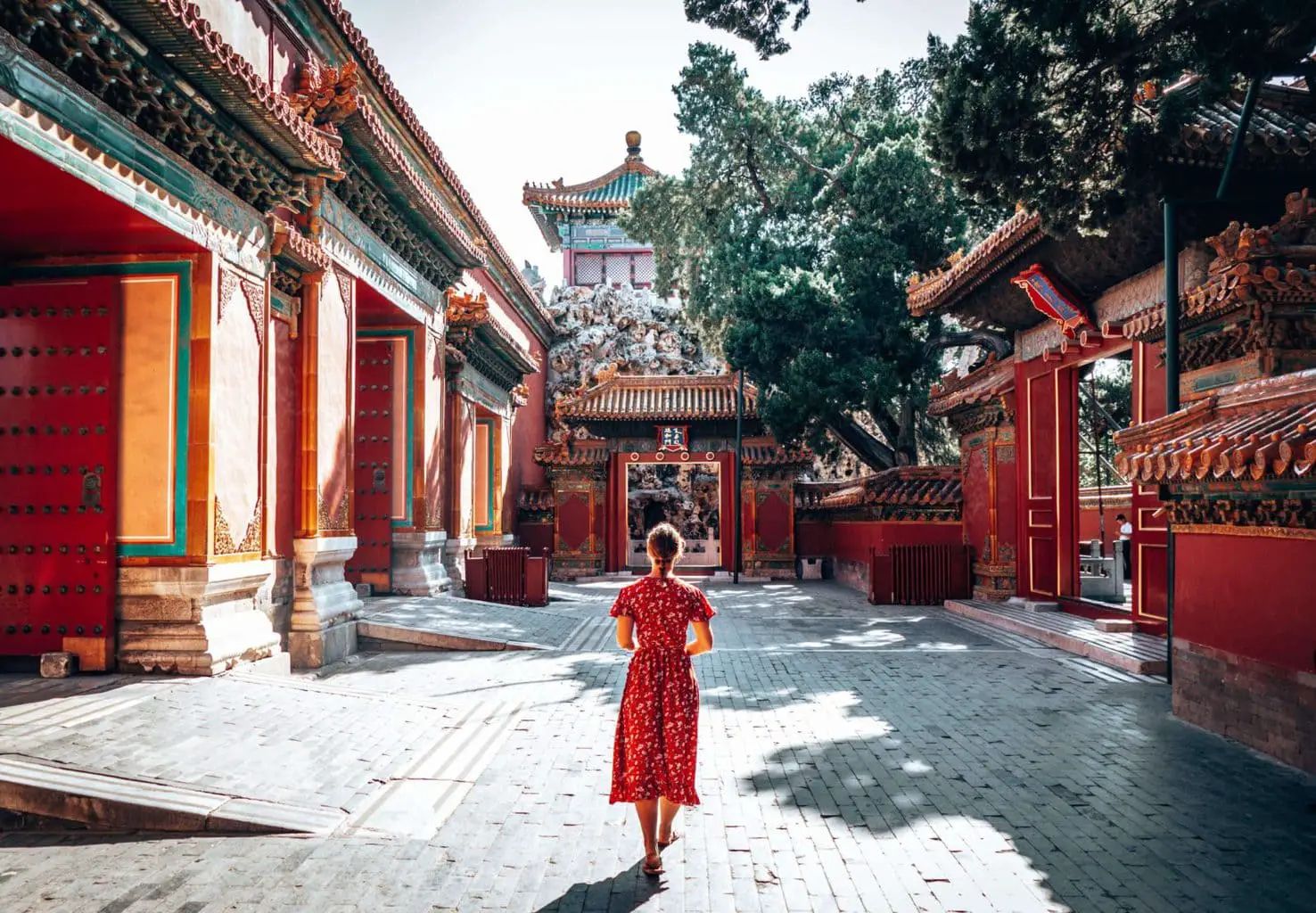
Zhangjiajie National Park
If you’re looking for unbelievable hiking and the most picturesque landscapes, with a bit of Hollywood fame thrown into the mix, look no further than the Zhangjiajie National Park – the inspiration for the floating mountains in James Cameron’s Avatar. In actual fact the area is called the Wulingyuan Scenic and Historic Interest Area (not quite as catchy), within which the Zhangjiajie National Forest Park resides.
This UNESCO World Heritage Site is located in the Chinese Hunan Province, and it’s not the easiest to get to, but very rewarding when you do! Just make sure you pack comfy shoes and get out early to make the most of the stunning nature, before the hordes of other visitors arrive. The national park is famed for it dense forest and striking limestone karsts and pillars, some 3,000+ of them and covers an area of nearly 400 square kms.
Fun fact: The Elevator that we took up on our first morning in the park, the Bailong Elevator, is the world’s tallest outdoor lift. It moves visitors to the top, covering 326 metres in less than two minutes. It’s a breath-taking way to see the mountains.
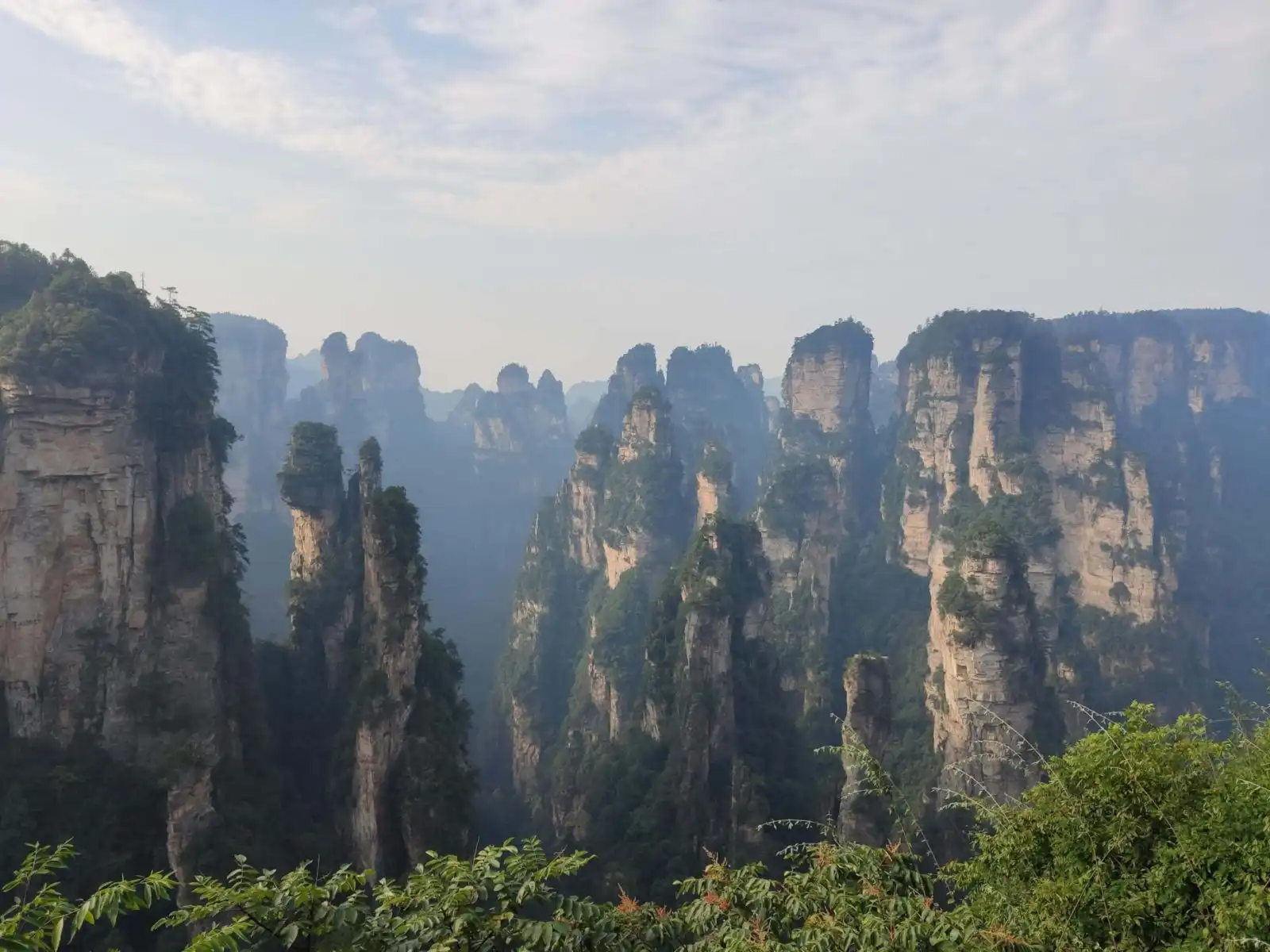
Read next: Want to go to Zhangjiajie? Here’s the perfect itinerary!
The Terracotta Army, Xian
Alongside the Great Wall of China, the UNESCO World Heritage site of the Terracotta Army is up there with the most famous landmarks in China, and no surprise, it’s high up on our list here too. Only rediscovered in the 1970s when a local farmer was digging a well, the world renowned site is actually an ongoing archaeological dig. So don’t be surprised to see many people doing the painstaking work of putting the statues back together. On average each of the figures takes 6 months to excavate and re-assemble.
The Terracotta Warriors were built to protect the first Emperor of China, Qin Shi Huang in the afterlife. And they stayed buried for 2,000 years before our farmer friend stumbled on them.
There are 3 main pits that can be visited, and although these can get a little crowded, it is well worth spending a day to walk around the site. The pits are estimated to contain over 8,000 sculptures.
Fun fact: It is estimated that some 700,000 workers spend 30 years working on the mausoleum and Terracotta Warriors!
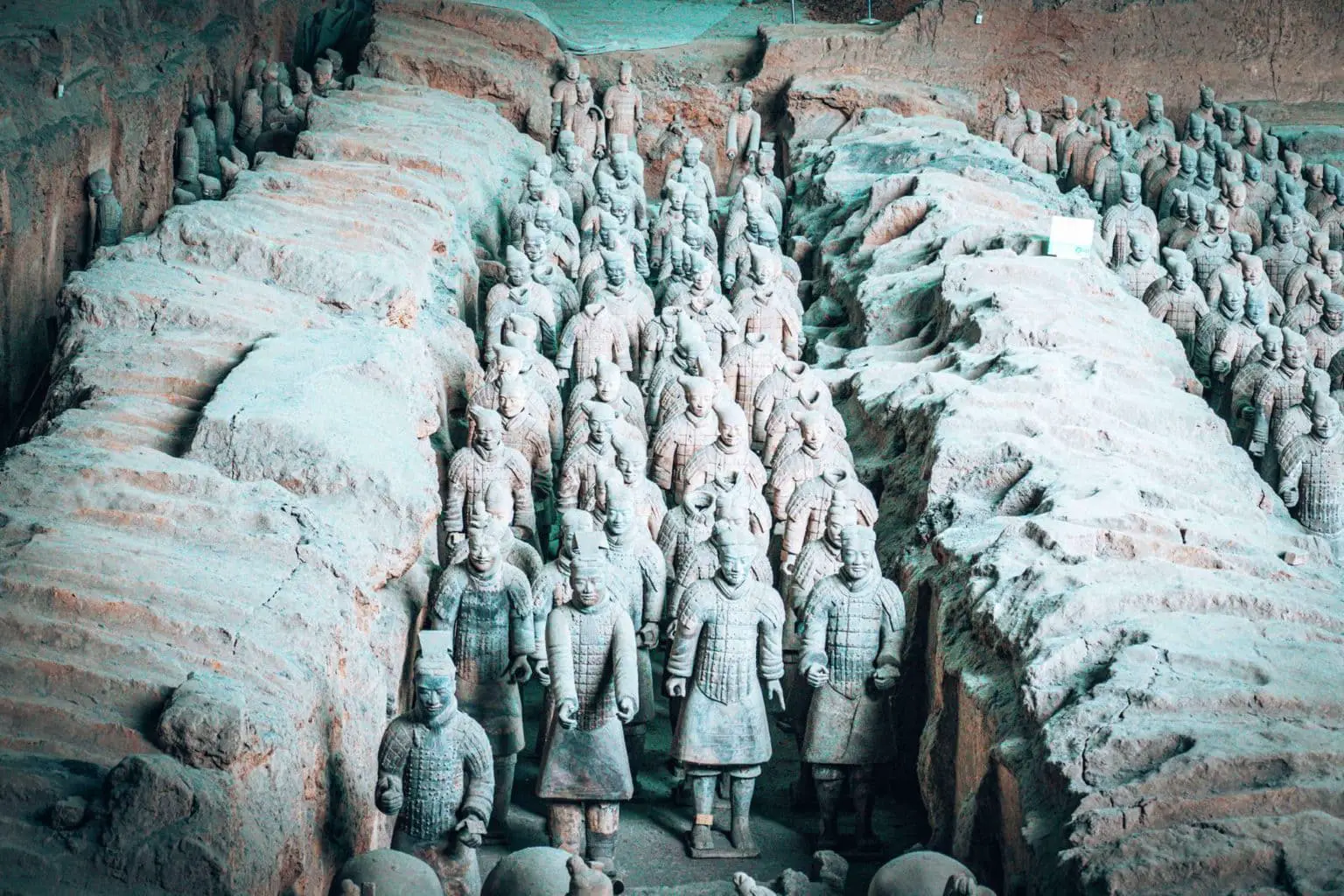
Recommended: How to spend 3 days in Xi’an!
The Bund, Shanghai
The most famous area in Shanghai, and a place that we found had a real vibe. In reality, the Bund is just a waterfront area in central Shanghai, that looks out over the Huangpu River across to Shanghai’s financial district (Pudong District). And the best time to visit is during the evening, when all the skyscrapers like the Oriental Pearl Tower are lit up, providing a very modern, interesting light show.
You’ll notice that there are many old buildings on the Bund, which stretches back to the 1860s, when the area became a spot for large foreign investment. There is a walking trail that tourists can take to take in this fascinating mix of old colonial and modern buildings, that stretches for 2.6km.
Fun Fact: The Bund has a Sightseeing tunnel below it, connecting Pudong with the Bund. This tunnel – which is entirely a tourist trap – has the ‘shortest tram route’ in the world of only 646 metres.
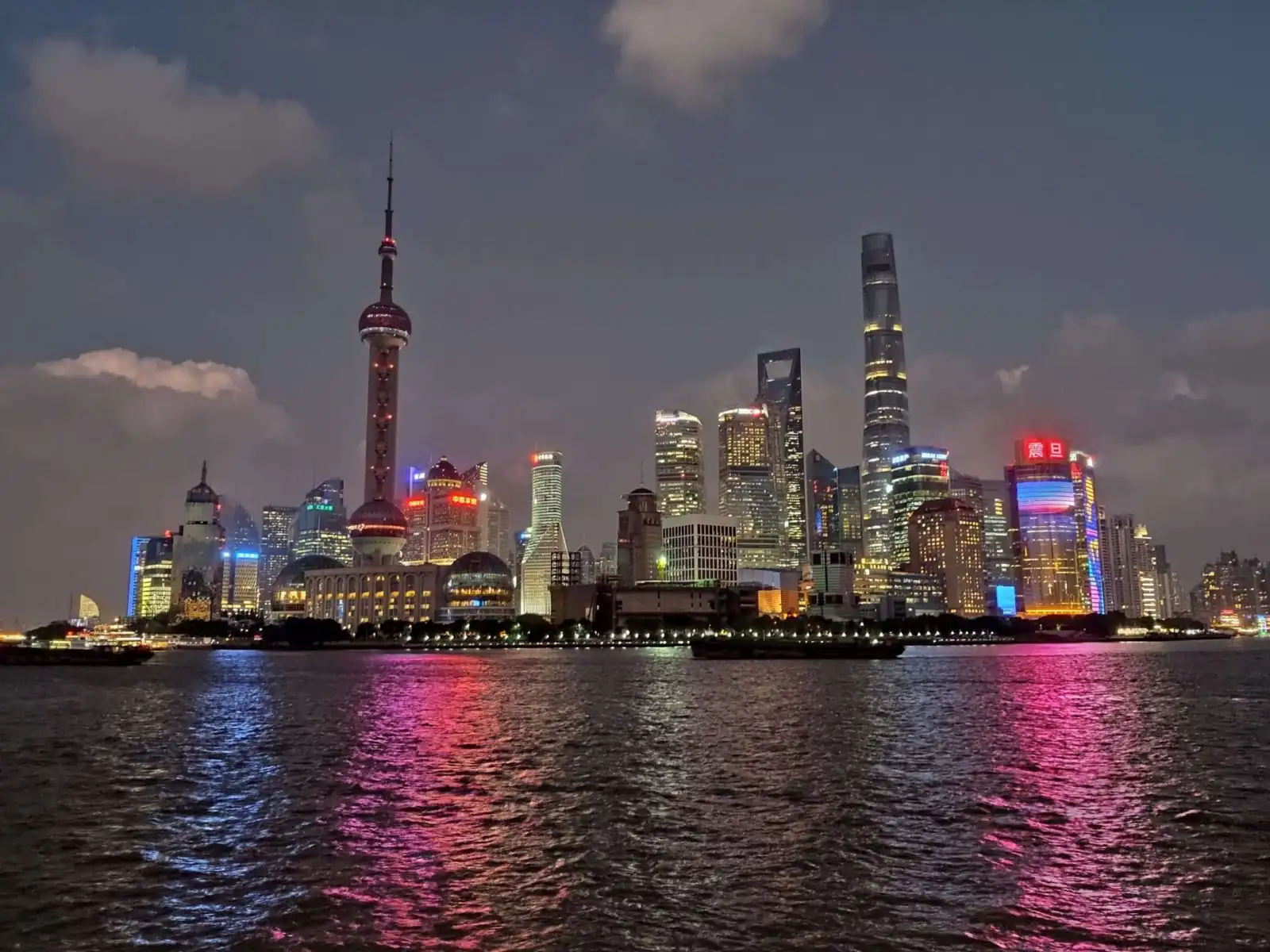
The Potala Palace
Added to the UNESCO world heritage list in 1994, this stunning palace and fortress in Lhasa, in China’s autonomous region of Tibet, was the winter palace of the Dalai Lama for over 300 years. In that time, 10 different Dalai Lamas called the Potala Palace their home. The building was constructed by the 5th Dalai Lama in 1645, but there has been a fortress on the same site since 637.
Built at an altitude of 3,700m, the palace is enormous, being 400m wide by 350m deep and contains over 1,000 rooms and 200,000 statues. Which, given the terrain that it’s in, is an unbelievable feat of engineering! It’s also designed to withstand earthquakes – how smart is that?!
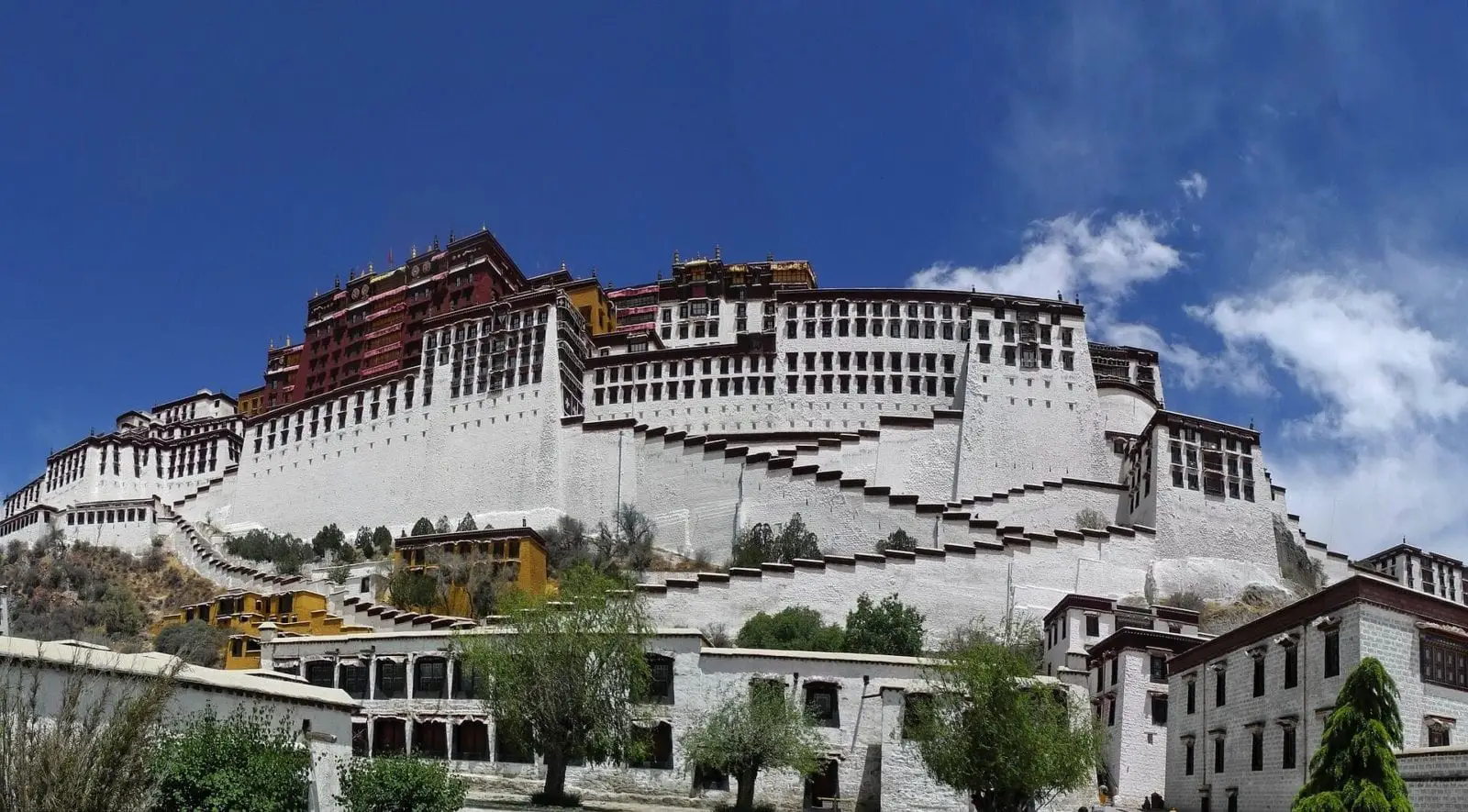
Fun Fact: Only 2,700 visitors are allowed to enter the Potala Palace each day, so if you’re keen to visit this incredible landmark, you may want to book up early.
Tiananmen Square, Beijing
So from the previous few entries in our top 10 Chinese landmarks, you may have gathered that China doesn’t do small. And our next entrant into the Top 10 is no exception. Tiananmen Square is enormous, and considered to be one of the top 10 largest city squares in the world. The square is actually named after the northern city gate, Tiananmen, which translates as ‘the Gate of Heavenly Peace’.
The square is a really impressive place to visit, alongside the huge number of locals that visit the square each day, there’s a lovely feel of Chinese patriotism to the area. And in addition, the square overlooks the Forbidden City (also check out Jingshan Park for the best photo opportunity of the Palace).
The square also holds many other Beijing must-see sites including the Monument to the People’s Heroes, the Great Hall of the People, the National Museum of China and the Mausoleum of Mao Zedong.
Fun Fact: Tiananmen Square is also a lot older than it looks, having been built in 1651. Although it wasn’t always this huge – it was rebuilt 4 times the size of the original square in the 1950s to now be almost ½ square kilometre in size.
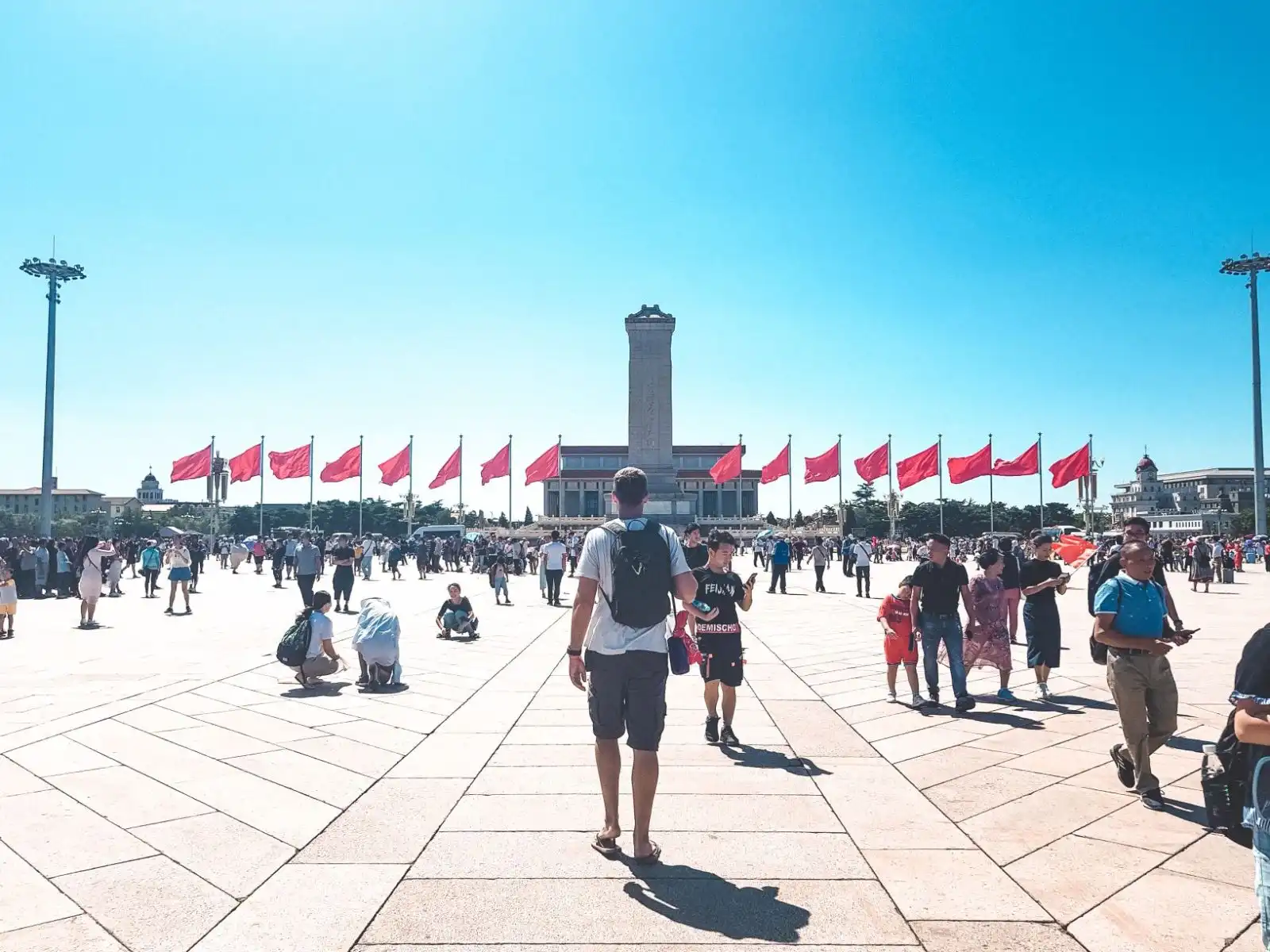
The Temple of Heaven, Beijing
Another Beijing entry, and another UNESCO World Heritage site. The Temple of Heaven complex was constructed in the early 1400s, and was where emperors from the Ming and Qing Dynasties held their Heaven Worship ceremonies – essentially where they prayed for good harvests.
It was enlarged over time and opened to the public as a park in 1988. The temple grounds cover nearly 3 kilometres and has three main areas: the Hall of Prayer for Good Harvests, a beautiful circular building that stands 38m tall; the Imperial Vault of Heaven which is a smaller version and the Circular Mound Altar, which boasts incredibly sculpted dragons. Like the Forbidden City,
Fun fact: Unbelievably, given the size of The Forbidden Palace, the area that makes up The Temple of Heaven is almost four times larger!
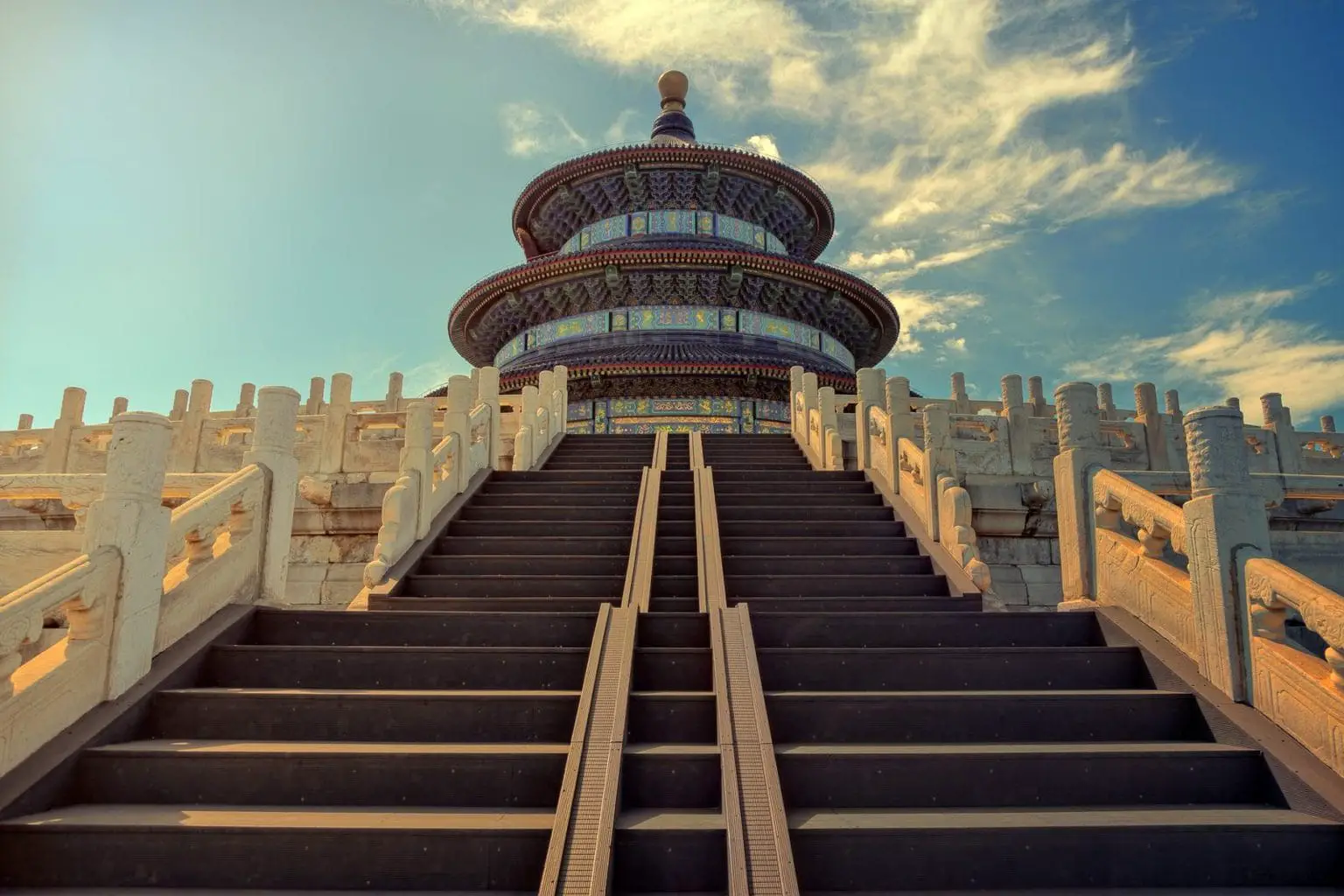
Read next: The perfect guide for 4 days in Beijing!
Fenghuang Ancient Town
Now to get to Fenghuang, you really have to get off the beaten path in China, so the Ancient City of Phoenix could also make it right up the list of hidden gems in China. But it also makes our top 10 list of iconic landmarks because of how beautiful the ancient town looks at night.
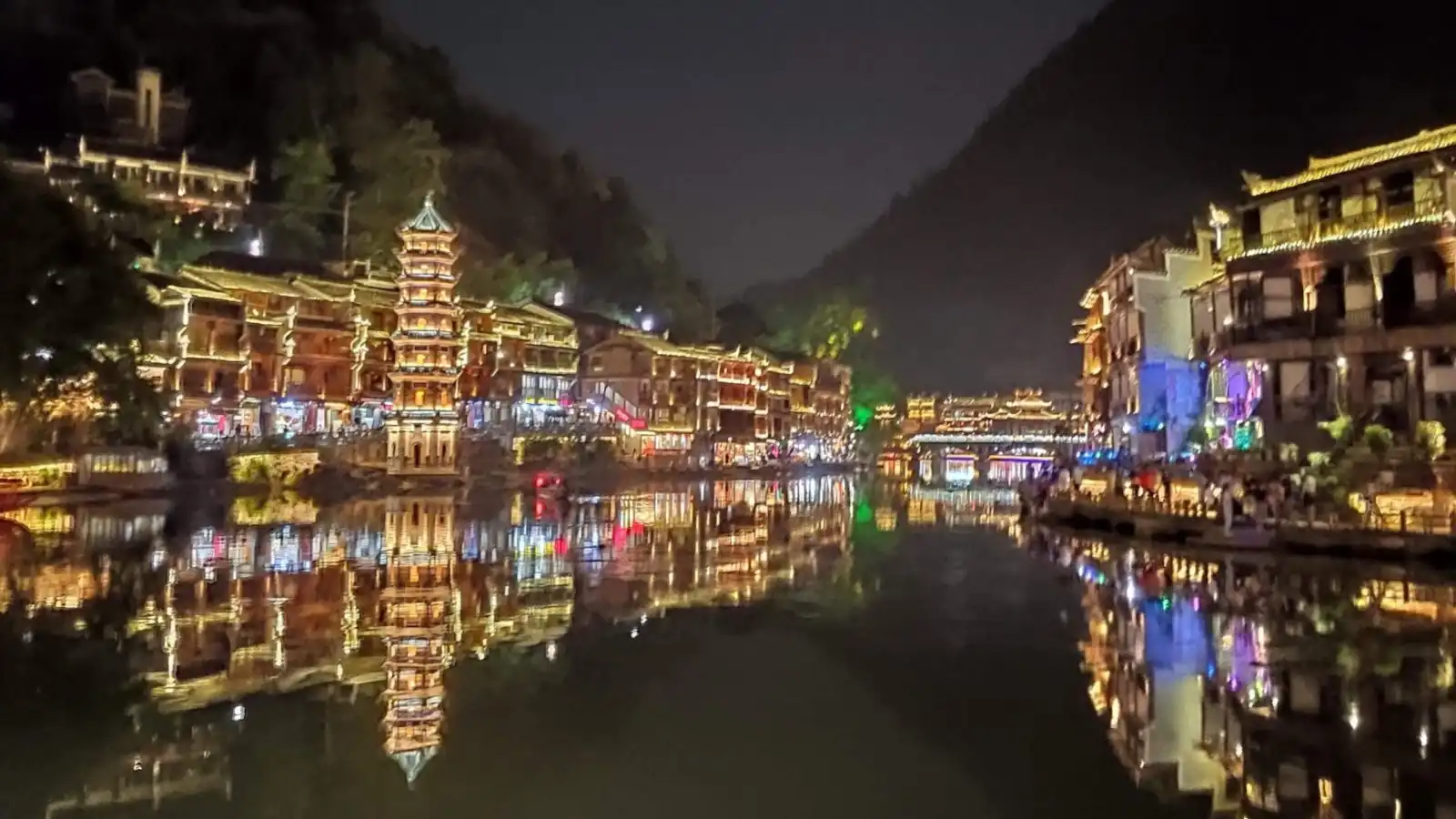
Set in the Hunan Province, the town was called Fenghuang (or Phoenix) because of an ancient myth that two of these mythical birds found the town so beautiful that they hovered over the town, and were reluctant to leave! Which just gives you an idea of how beautiful this place is.
The town is around 1,300 years old, and alongside beautiful old buildings, there are stunning bridges and gardens that can be explored. Unlike other ancient towns in China, this one has been preserved, making it an authentic place to see olden time China.
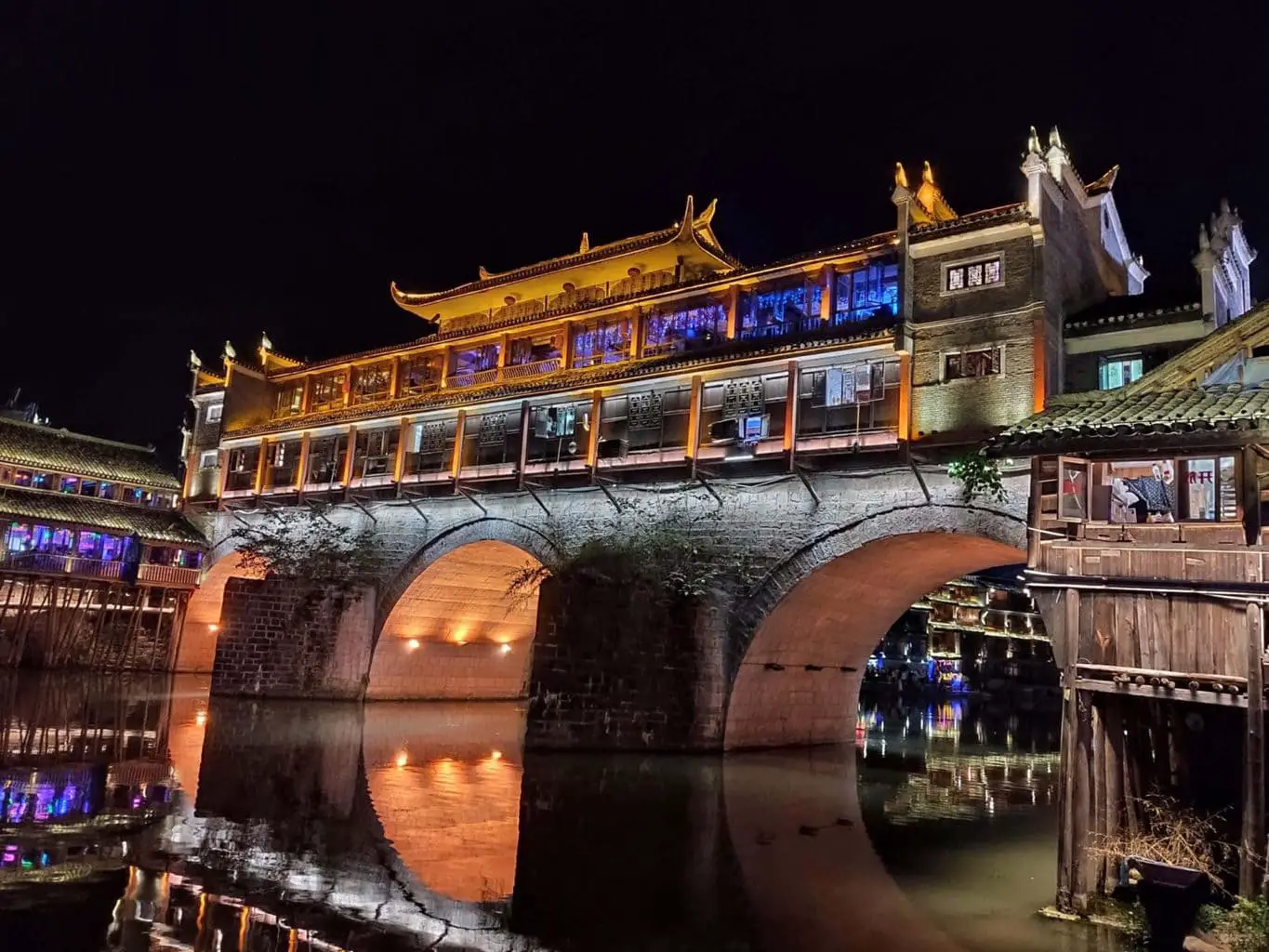
The Great Buddha, Leshan
Lying at the meeting point of the Min and Dadu Rivers, near the city of Leshan (not too far from panda-central Chengdu), you’ll find our final entry in the Top 10 list of China’s most iconic landmarks – The Leshan Giant Buddha.
The Giant buddha was carved on a cliff face during the Tang dynasty between 713 and 803, and is an incredible 71m tall stone Buddha statue. The statue is so big that you really have to see it for yourself to believe it. It is so impressive. The Buddha and surrounding area have been included as part of the UNESCO World Heritage site listings.
Fun Fact: The Leshan Giant Buddha is the largest and tallest stone statue of Buddha in the world.
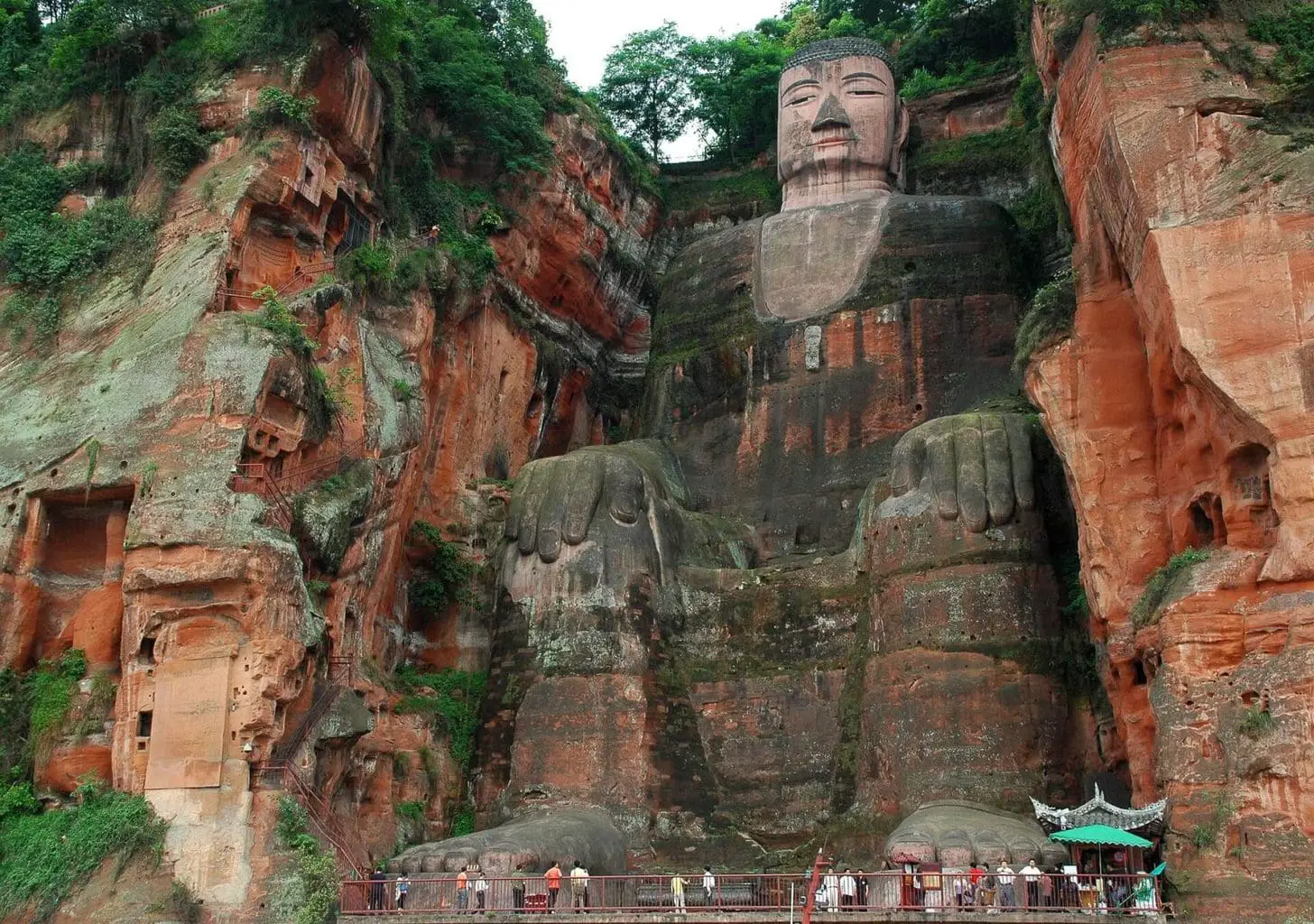
Interactive Map of China Landmarks
Recommended: Our ideal 2 week China travel guide.
Bonus: China landmarks that didn’t make the top 10 list.
China is a country so vast that we couldn’t pay homage to all the incredible landmarks this fascinating country has to offer. The Top 10 Chinese Landmarks above just scratches the surface and so we wanted to also jot down a few more, that we thought were worth an honourable mention:
The City Walls, Xian
Of the best ways to Explore Xian is to walk (or bike) the ancient city walls. The walls were built in 1370 and they are the largest city walls in the world and provide a continuous loop of nearly 14km around the old city. There are 4 main gates: The East Gate (Changle Gate), West Gate (Anding Gate), South Gate (Yongning Gate) and North Gate (Anyuan Gate), with the South Gate being the most impressive of them all.
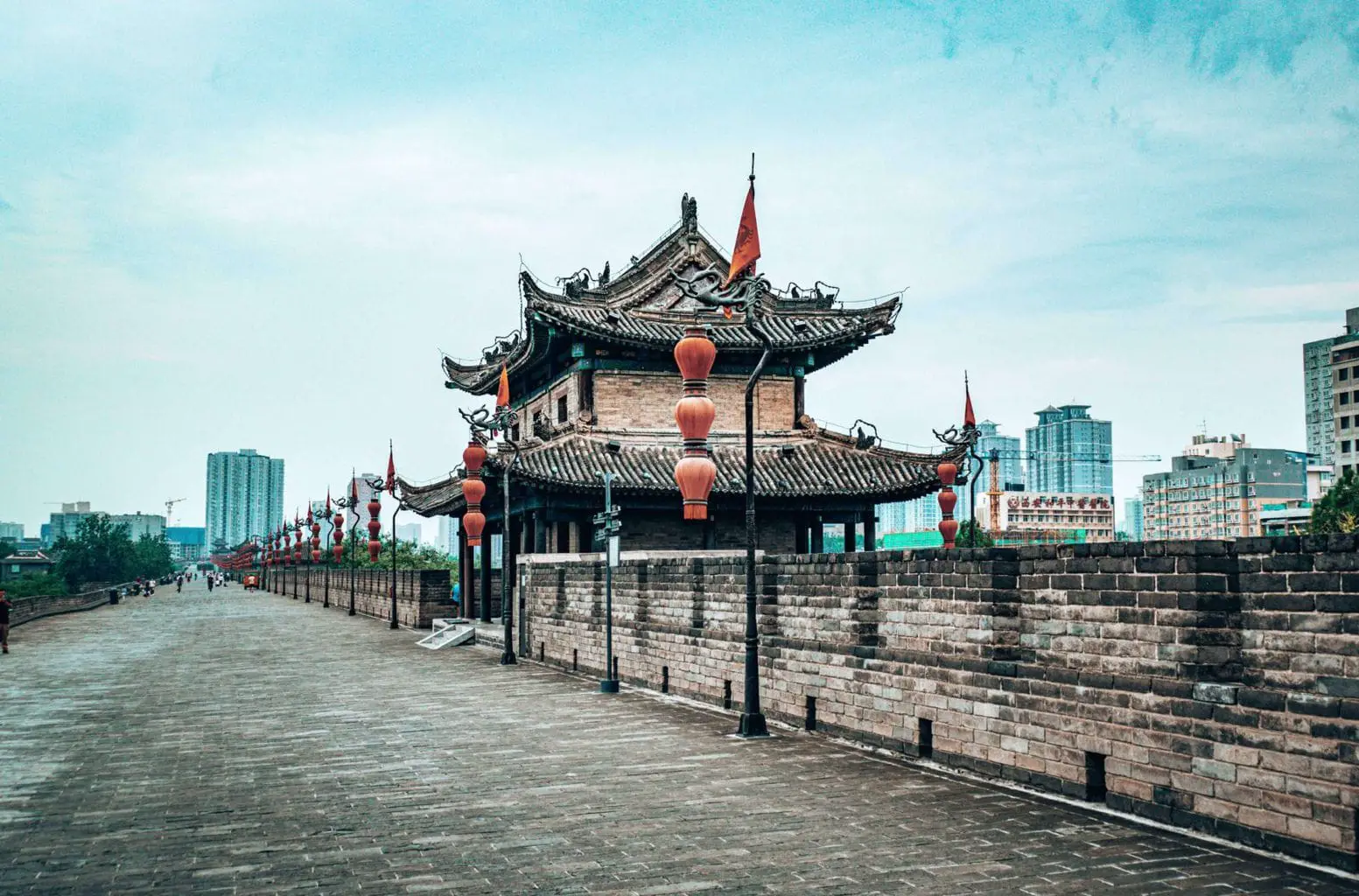
Elephant Trunk Hill, Guilin
One of the most renowned landmarks in Guilin, in the Guangxi province, is the Elephant Trunk Hill. More than just an attraction it’s actually the symbol of the city! According to legend, the elephant trunk mountain was transformed from god’s image in the sky. There are many tales about the formation of this ‘hole’ in the wall.
The Hill, also known as Yi Mountain or Chen Shui Mountain, boasts a round opening under it’s ‘trunk’ which is known as the Water Moon Cave, so-called since when night falls, the moon can be seen through the arch reflecting off the water of the Taohua and Lijang Rivers. That’s a great thing to witness if you’re in the area – head to a nearby rooftop bar if you don’t want to pay the entrance fee to see it in the park. You can also head out to do a river tour, flanked by beautiful rice terraces as you float on past.
The Dujiangyan Panda Base, Chengdu
Now the Panda’s are the national animal of China. And so while it’s not necessarily one large building or landmark, we’ve included the Dujiangyan Panda Base as an important landmark as it’s a conservation area that holds 90% of the remaining Panda population. This is a very important location for the Chinese people and, if you’re ever in Chengdu, it’s definitely worth a visit.

Tianmen Mountain, Zhangjiajie
Located just close to the Avatar mountains that did make the Top 10 is Tianmen Mountain, meaning ‘Heavens Gate Mountain’. It’s so called since it has a natural ‘hole’ accessed by a steep staircase that winds up to the mouth of this impressive mountain complex. It’s an imposing figure and an excellent day trip that we really enjoyed. What makes it even more interesting as a landmark is that it includes a number of glass bridges and walkways; all perfect for those with a fear of heights!
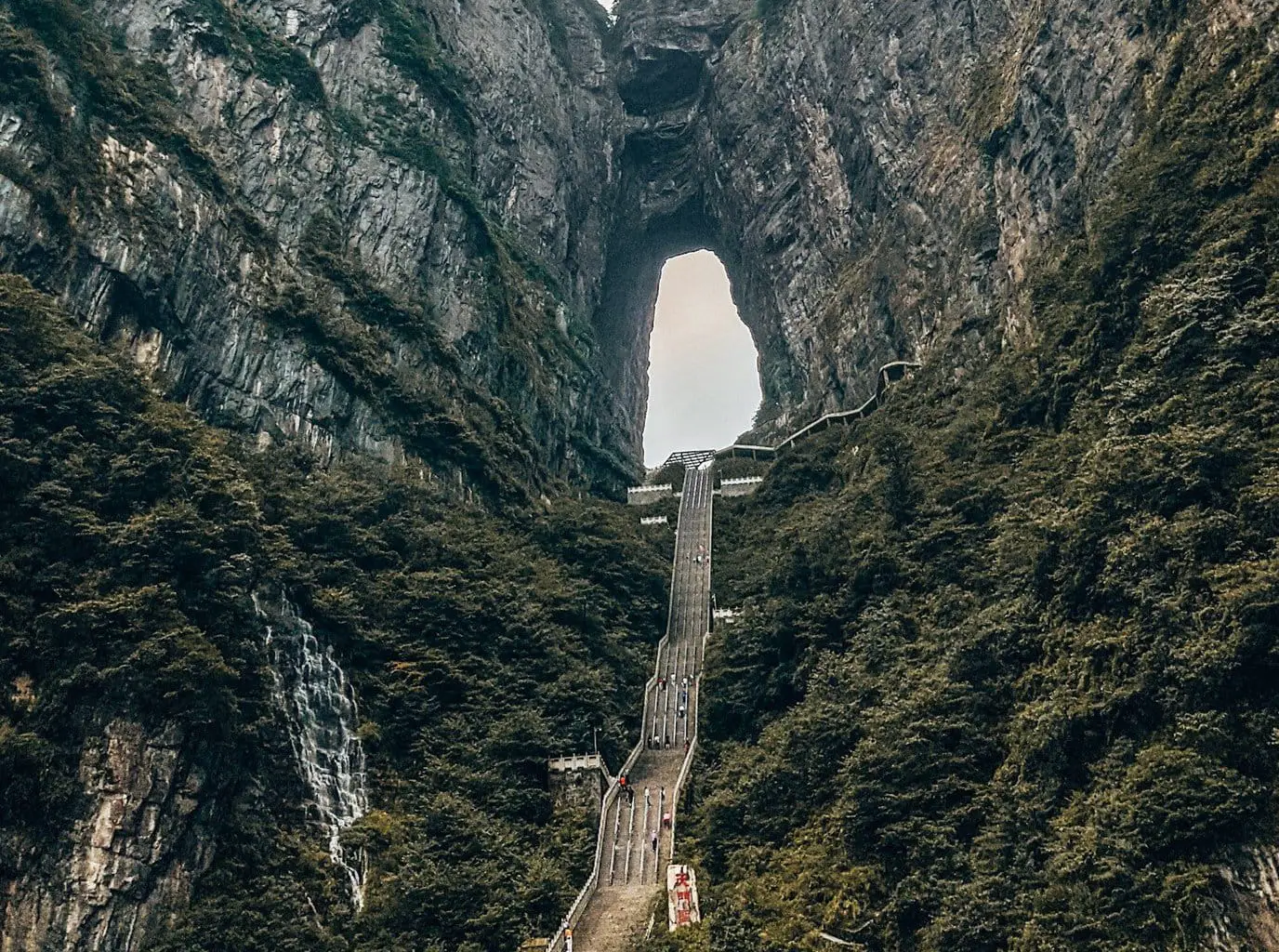
Reed Flute Cave
Known as the ‘Palace of the Natural Arts’ this natural limestone cave with millions of multicoloured lights is a huge landmark in Guilin. Dating back over 180 million years, the Reed Flute Cave coined it’s name from the types of reeds growing outside, which can be fashioned into flutes. Other than the gorgeous lighting, the interior of the cave is filled with many rock formations and ancient inscriptions dating back as far as 792, during the Tang Dynasty.
Tiger Leaping Gorge
Situated about 60 kilometres away from Lijang in China’s Yunnan province, the Tiger Leaping Gorge is part of the Three Parallel Rivers of Yunnan Protected Areas World Heritage Site. Essentially it’s one of the world’s deepest and most incredible river canyons, with a maximum depth of about 3.8 kilometres (12,500 feet). Legend has it the gorge got it’s named from a hunted tiger who escaped by leaping across the river at it’s narrowest point and using the rock in the middle.
The Summer Palace, Beijing
This UNESCO World Heritage site of the Summer Palace was the imperial palace and gardens from the Qing Dynasty. The near 3 square kilometre park is centred around Longevity Hill and Kunming Lake. Unfortunately we felt that we had just too many landmarks in Beijing and had to share the love around the rest of China. Otherwise this beautiful palace and gardens would have easily made it onto our hard-fought list, and should be part of every China tour.
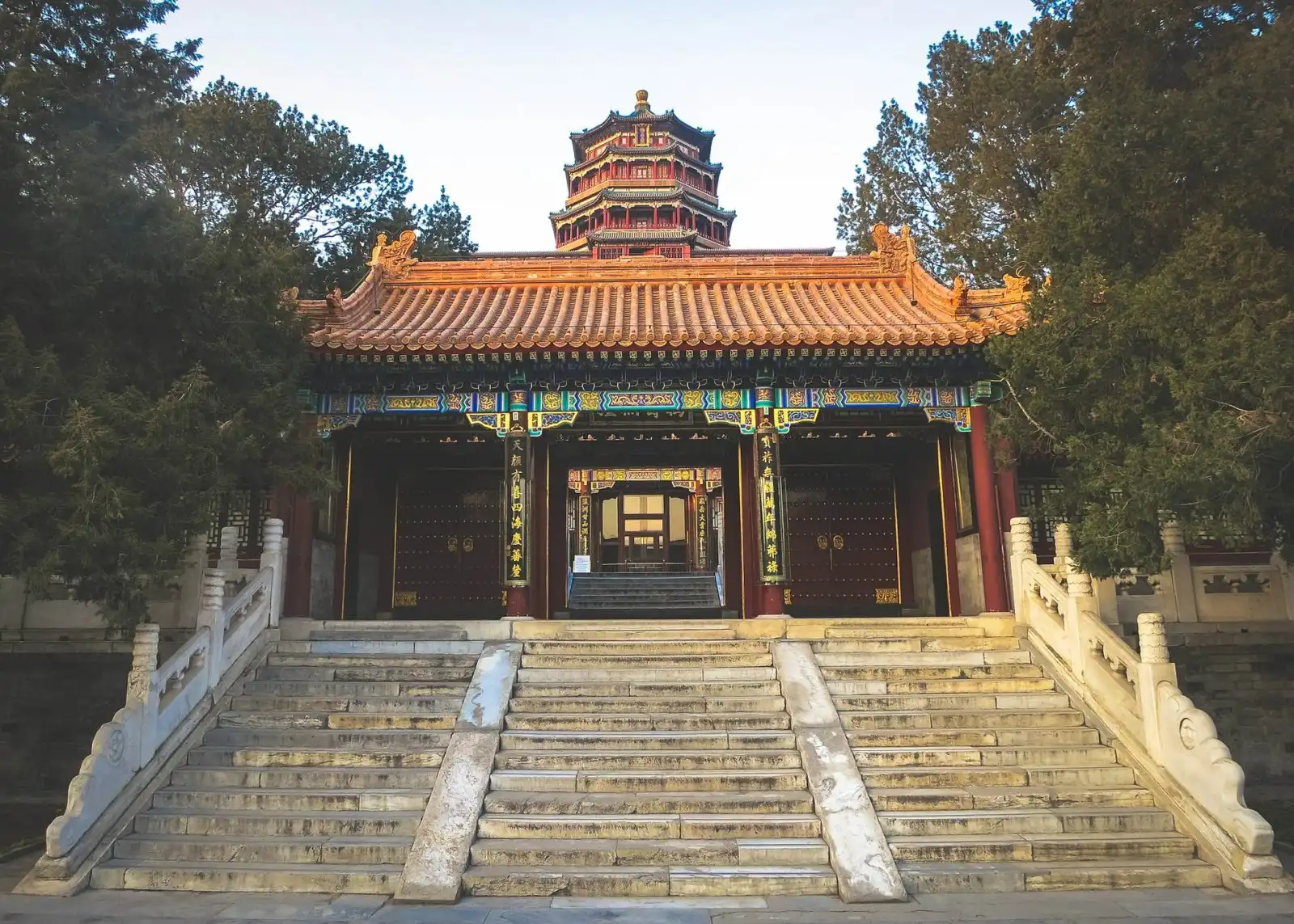
Want to ensure you stay connected in China? The Great Firewall of China means you need to be smart. Check out our list of Must-Have Apps for China Travel, to download before you go.
Did we miss any key landmarks in China off this list? What about Hong Kong and the Yangtze River? Or famous buildings in China’s lesser-known provinces? Please let us know in the comments.
There are so many amazing places to visit in China, and famous buildings to boot! We’ve experienced nearly all of the China famous landmarks on this list but if you’re keen to explore some of the other famous landmarks in Asia, why not have a read through some of these:
- 21 Iconic building and landmarks in Singapore
- Famous places in Myanmar
- Most iconic buildings and landmarks in Vietnam
- The ultimate Indonesia landmarks
- 15 unmissable landmarks in Sri Lanka
- Thailand’s 21 most iconic places
- Iconic places and famous landmarks in Malaysia
What camera equipment and other gear do we use?
We’re living proof that you don’t need the most expensive gear to travel the world and take good photos. Here are some of our must have items that make it into the packing list for all our travels.
- Main Camera: Panasonic Lumix FZ1000
- Drone: DJI Mavic Air – Fly More Combo
- GoPro: Hero 7 Black
- GoPro Dive Case: Go Pro Housing
- GoPro Case: Smatree GoPro Carry Case – Small
- Packing Cubes: Eagle Creek Packing case
- Backpack: Osprey Farpoint 70
- Powerbank: Anker Powercore
- Phone: Xiaomi Mi 9
- Hard drive: Transcend Slim Storejet 2TB
- Laptop: Lenovo IdeaPad 720s
- Headphones: Bose Quiet Comfort 35
- Wifi Hotspot: GlocalMe G4
If you want to save this for later? Why not pin it….
